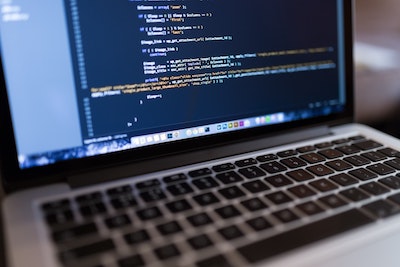Techsplaining 101: Integrated technologies

by Elizabeth Jenike, IT Services
The technology environment at Miami seems like a cohesive unit -- and that’s by design. When you turn it on, it works. That’s the goal of any functioning technological environment.
Under the hood, however, is a different story. There is an entire network (pun intended) of interconnected apps and computing infrastructure that keep Miami working effectively. When you clock in to work, you’re using Kronos. When you print your W2 information at the beginning of tax season, you’re using Banner. All of these various technologies are integrated with Miami’s ecosystem, resulting in the aforementioned cohesive unit.
But how does all of this work? Welcome to Techsplaining 101!
How does it work?

Here’s the quick techie explanation: In a lot of cases, our application developers use application programming interfaces, or APIs, to connect Miami’s underlying technological environment to third-party applications. An API is a set of functions that allow applications to communicate with one another. Programmers use APIs to create software and interact with the systems external to Miami -- like Kronos or Banner.
That’s how it works, physically. But how does Miami go about choosing the right integrations for our environment? In the background, according to senior application support analyst Tim Ward, it’s a question of data.
“We pick point solutions (products that solve one problem) because we tend to think about answering one problem with one solution, or a few problems with one solution, but we don't have one piece of software that can do absolutely everything (and wouldn't want it),” Ward said. “The problem this poses is that often, these problems require information about other things, like our users, or our payroll data, or HR data, or housing data, etc.”
So with all of that data coming from separate sources, how do we get it all in one place? The answer is, of course, integrations.
“We don't want to create a separate source of data for each app that a department uses, so we create integrations to connect new apps to our existing sources of data,” Ward explained. “This allows us to retain a single source of truth, and enables things like single sign-on between Miami-created services and services Miami has contracted for, or for us to add a new HR system and connect it to our existing workflows for everything else.”
Integrated learning technologies in the classroom
“Integrated technology” can mean something important on a higher level, as well. We all use mobile devices, laptops, desktop computers, tablets -- and making sure all of those platforms come together to provide a cohesive learning experience is critical.
“Technology integration is the well-coordinated use of digital devices and cloud computing as tools for problem-solving, deeper learning, and understanding,” wrote ClassCraft contributor Debi Christensen.
We use these tools every day -- in the classroom, in the office, and around campus.
One ready example that every student at Miami is familiar with is the integration between Canvas and Webex. Canvas and Webex are two different tools supported by two separate companies (Instructure and Cisco), and their partnership allows the Webex functions to be accessed right from the Canvas interface.
All coming together
Miami’s technological ecosystem is complex, but at the end of the day, it serves an important purpose: facilitating the educational and research goals of the University.

